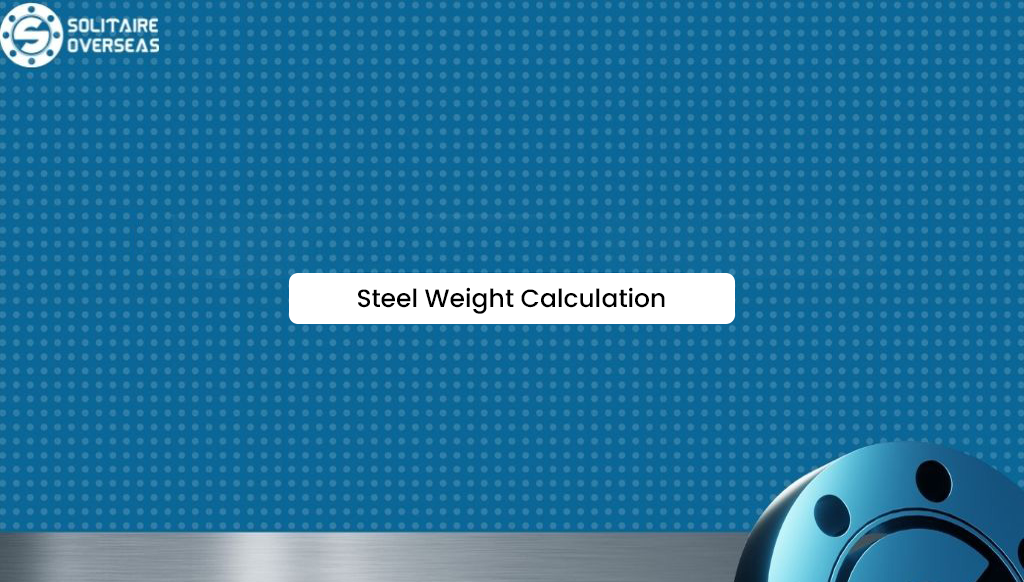
Sheet Metal Gauge Chart When working with sheet metal, you often hear the term “gauge.” For those not familiar with…

In the world of metals, getting the weight of steel right is like hitting the bullseye in a game of darts. It’s that crucial! Whether you’re building, preparing, or engineering, nailing down precise weight numbers sets the stage for smooth sailing in project planning and budgeting. So, let’s dive into the formulas that’ll unlock the mystery of steel weight calculation and arm you with the knowledge you need to steer your projects towards success.
Unit weight is like the magic wand that reveals the density and composition of materials. It’s a fundamental metric expressed in various units like pounds per cubic foot, grams per cubic centimeter, kilograms per cubic meter, or kilonewtons per cubic meter. This metric defines how much mass or weight fits into a certain volume.
Steel’s unit weight, also known as weighted density, is a golden nugget in engineering and construction. It tells us how much steel weighs per unit volume. Typically, we measure it in kilograms per cubic meter (kg/m3), but you might also encounter grams per cubic centimeter, kilonewtons per cubic meter, or pounds per cubic foot. These numbers are like the fingerprints of steel, unique and indispensable in our quest for precision.
So, the next time you’re juggling steel weight calculations, remember this guide. It’s your compass in the vast ocean of metalworking, guiding you towards optimal resource allocation and seamless project execution.
The formula used to calculate the unit weight of steel bars is D²/162. Where, D = Dia. Of steel bars, 162 is a constant value.
Derivation of D2/162 Formula
Consider a steel bar with a diameter of D and a length of L.
Weight of Steel Bar (W) = Unit Weight of Steel Bar (γ) x Volume (V)
W = γ x V
W = πD²/4 x γ (V = πD²/4)
As known that Steel unit weight is about 7850 kg/m3 (γ)
W = πD²/4 x 7850
Here, D is steel diameter in mm, and the density of steel is in kg/m3. To make a constant value in the same unit we will convert Dia. Of steel in mm to m.
D² mm / 1000²
W = π/4 x D²/1000² x 7850
W = D²/162.28 kg/m
W = D²/162 kg/m
Unit Weight Of Steel | ||
Size | Kg/m | Kg/feet |
6 mm | 0.222 kg | 0.067 kg |
8 mm | 0.395 kg | 0.120kg |
10 mm | 0.617 kg | 0.188 kg |
12 mm | 0.89 kg | 0.270 kg |
16 mm | 1.58 kg | 0.480 kg |
20 mm | 2.47 kg | 0.751 kg |
25 mm | 3.86 kg | 1.174 kg |
32 mm | 6.32 kg | 1.925 kg |
Calculating the weight of sheet metal might seem like a puzzle, but with the right formula, it’s as easy as pie! Here’s how it works:
The Formula Simplified
Weight (in pounds) = Length (in inches) x Width (in inches) x Thickness (in inches) x Density (in pounds per cubic inch)
An Example to Make It Crystal Clear
Let’s say you have a steel plate that’s 1/4 inch thick, measuring 6 inches by 8 inches. To find out how much it weighs:
Weight (in pounds) = 6 inches x 8 inches x 0.25 inches x 10.2 pounds per cubic inch = 97.6 pounds
This simple formula is like a superhero cape for folks in the metals industry. It helps them estimate costs accurately and plan ahead. Whether they’re building bridges or preparing machinery, knowing the weight of sheet metal ensures smooth sailing in engineering and construction projects.
So, the next time you’re dealing with steel plates or sheet metal, remember this formula. It’s your trusty tool for precise material handling and smart decision-making!
Calculating the weight of steel beams and structures is a bit like solving a complex puzzle. Unlike straightforward plate or sheet metal calculations, this process involves several variables and considerations. Let’s break down the key factors that influence these weight calculations:
The dimensions and cross-sectional shape of the steel beam play a big role in its weight. Different profiles like I-beams, H-beams, and U-beams have different weights based on their geometry.
Longer beams generally weigh more than shorter ones, assuming the cross-sectional area remains constant. So, the length of the beam directly affects its weight.
The type of steel used and its density also impact the weight of the structure. Higher density steel means heavier structures.
Taking into account extra loads, like dead loads (permanent non-moving loads such as the structure’s own weight) and live loads (temporary and varying loads), is crucial for accurate weight calculations.
The type and number of connections and joints in the design also affect the weight of steel structures.
Professionals in the field rely on a method called “handbook calculation” to accurately determine the weight of these large-scale steel components. This method considers all these factors to provide precise estimates for engineering and construction projects.
So, the next time you’re dealing with steel beams and structures, remember these factors. They’re the building blocks of accurate weight calculations, ensuring sturdy and reliable construction.
Engineers and constructors often turn to engineering handbooks, design codes, and structural analysis software to perform handbook calculations. This method meticulously considers all variables influencing steel weight, providing precise estimates crucial for large-scale projects like bridges and skyscrapers.
Calculating the weight of steel bars and shapes is straightforward. Just use this simple formula:
Weight (lbs)=Length (ft)×Width (ft)×Thickness (ft)×Density (lb/ft³)
Weight (lbs)=Length (ft)×Width (ft)×Thickness (ft)×Density (lb/ft³)
For example, to find the weight of a 4″ square bar stock measuring 8′ in length:
Weight (lbs)=8′×4′×0.33′×490 lb/ft³=781 lbs Weight (lbs)=8′×4′×0.33′×490 lb/ft³=781 lbs
Estimating the weight of steel pipes requires a bit more precision. Use the Weight formula for Steel pipes:
W=0.02466×D2×L/10202
Where:
Example Calculation:
Let’s say we have a steel pipe with an outside diameter (D) of 100 mm and a length (L) of 6 meters:
W=0.02466×1002×6/10202
W=0.02466×10000×6/10202
W=1480/10202
W=0.145 kg/m
By mastering these methods and formulas, professionals ensure precise material handling and efficient resource planning in engineering and construction projects.
In the dynamic province of steel, accurate weight calculations are the cornerstone of effective project planning and resource management. Armed with the formulas provided for various steel types – be it plate or sheet metal, beams or structures, bars or shapes – you now possess the means to determine weight effortlessly.
Whether your endeavors involve modest sheet metal ventures or grand construction projects incorporating bars and shapes, proficiency in these weight calculation methods can revolutionize your project planning. Understanding steel weight facilitates smart material selection, strong load capacity assessment, and precise cost estimation, ultimately streamlining operations and conserving resources.
As you step aboard on your steel-centric projects, bear in mind that accurate weight calculations ensure structural stability and operational safety. By harnessing these convenient formulas, you permit yourself with invaluable expertise, enabling you to optimize engineering and construction endeavors while confidently navigating the vast World of steel.
The formula for calculating the weight of steel typically involves multiplying the volume of the steel (length × width × thickness) by its density. It can be expressed as: Weight = Volume × Density.
The number “162” is often used in the formula for calculating the weight of steel bars. It represents the factor used to convert the volume of steel (in cubic inches) to its weight (in pounds) when the density of steel is assumed to be 0.2836 pounds per cubic inch. The formula is: Weight (lbs) = Volume (in³) / 162.
To calculate the weight of TMT (Thermo-Mechanically Treated) steel bars, you typically use a formula that considers the length of the bar and its diameter. One common formula is: Weight (kg) = (Diameter^2 × Length × Density) / 162.5, where the density of TMT steel is usually assumed to be around 7850 kg/m^3.

Sheet Metal Gauge Chart When working with sheet metal, you often hear the term “gauge.” For those not familiar with…

Weight Formula for Steel In the world of metals, getting the weight of steel right is like hitting the bullseye…

SPFH590 Chemical Composition SPFH590 steels, as defined by the JIS G 3131 standard, are hot-rolled steels widely used across various industries.…



